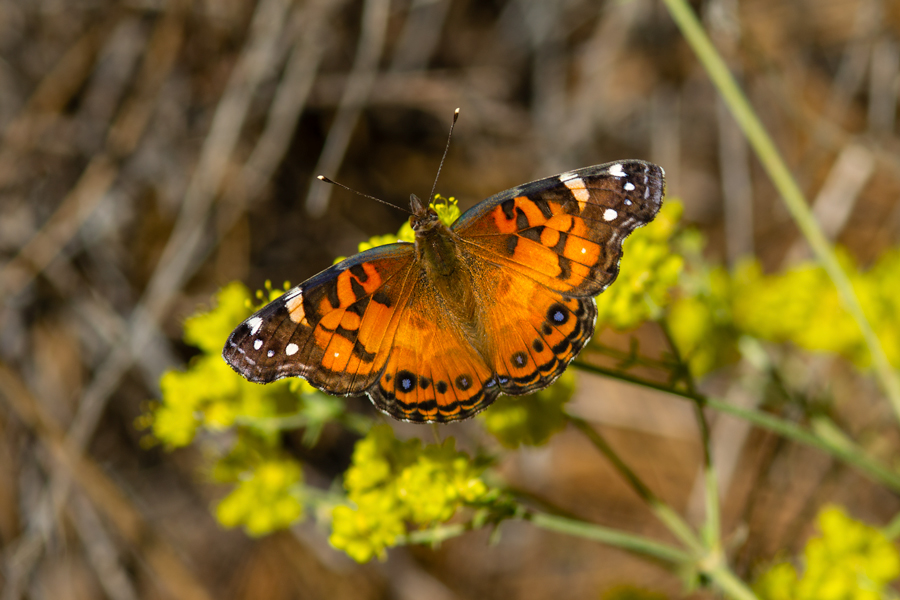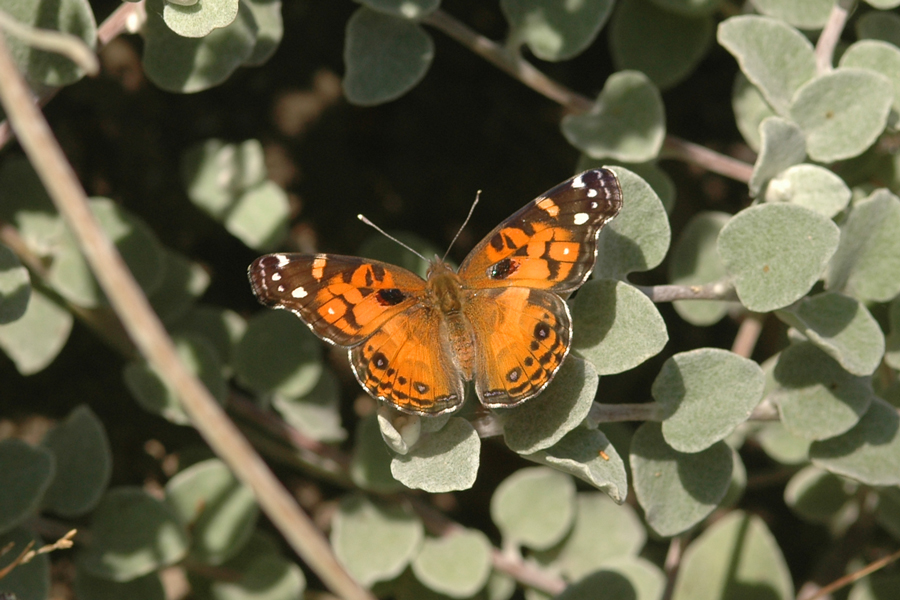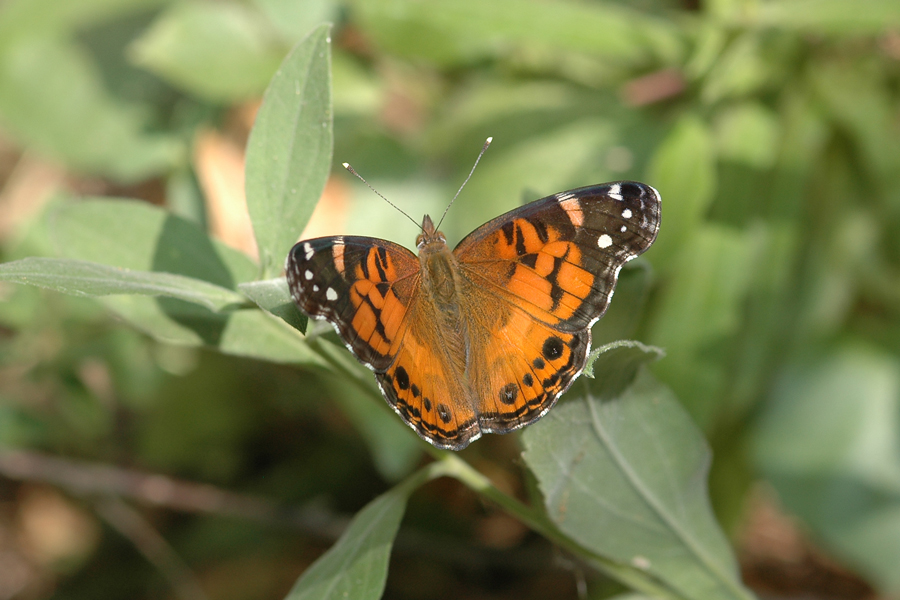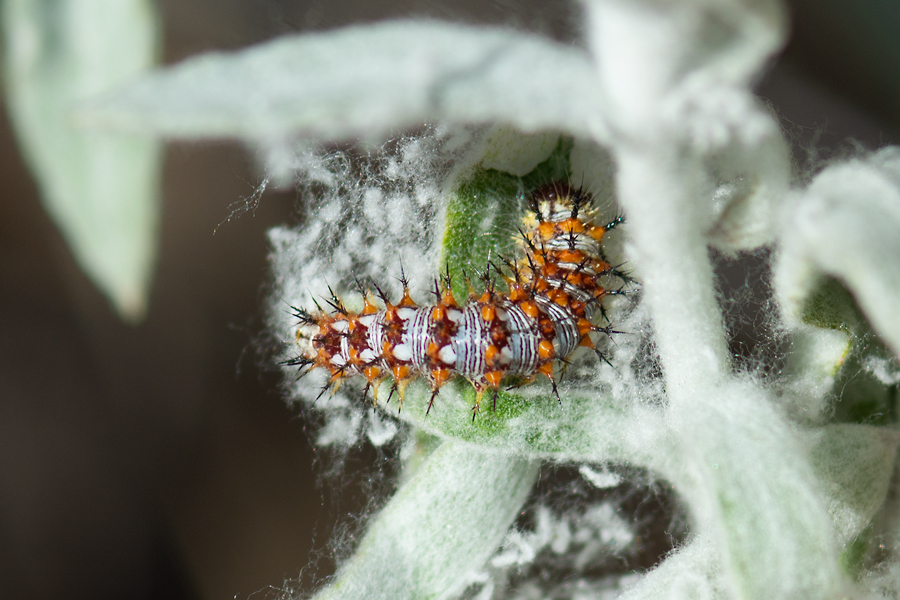Vanessa virginiensis
American Lady
Vanessa virginiensis isn't particularly common but may be encountered in many places - other than the deserts perhaps - most of the year. The two large eyespots on the ventral side distinguish it from the other ladies. There are other differences, but I find the shape of the forewing tip to be a quick indicator: painted ladies have a rounded tip, while both annabella and virginiensis have tips that protrude. The protrusion looks more squared off in annabella, and rounded off in virginiensis.
Virginiensis larvae feed mainly on pseudognaphalium (formerly gnaphalium) plants in our area and the white nests in the leaves are easy to find. When I had a large licorice plant in my garden, a female American lady found it and this species become a regular visitor. Since I pulled the plant out, it's become scarce.
This butterfly was first named by Dru Drury in the index of a 1773 book entitled Illustrations of Natural History; see the very nice illustration from plate 5 in the first volume (from 1770) below.

I didn't need more photographs of this species but felt this one was worth adding. Virginiensis was flying with fellow ladies annabella and cardui and it was good to revisit all three. August 11, 2019, Frazier Mountain Road.
A female Vanessa virginiensis (American lady) visited my garden in Long Beach and was interested in this licorice plant. April 5, 2011.
This American lady was ovipositing on licorice in my garden (see larva photos below from a few weeks later). July 3, 2009.
Vanessa virginiensis - the American lady. Bear Canyon, off the Ortega Highway in Orange Co., August 10, 2005.
Ventral of the same American lady, August 10, 2005.
This is a pretty typical caterpillar of the American lady. I found this one near Big Bear along Jenks Lake Road on September 6, 2023, and took this photo on the 19th.
Larva of an American lady on the licorice plant in my garden, July 26, 2009.
This interestingly-colored larva was on Pseudognaphalium canescens up Santa Anita Canyon in the San Gabriels. July 26, 2019. Larvae have been easy to find in these shelters this summer along the San Olene fire road.
This plate was published in 1770 in a book of insect illustrations by Drury, who is credited with naming virginiensis in the index in volume two, published in 1773.
©Dennis Walker








